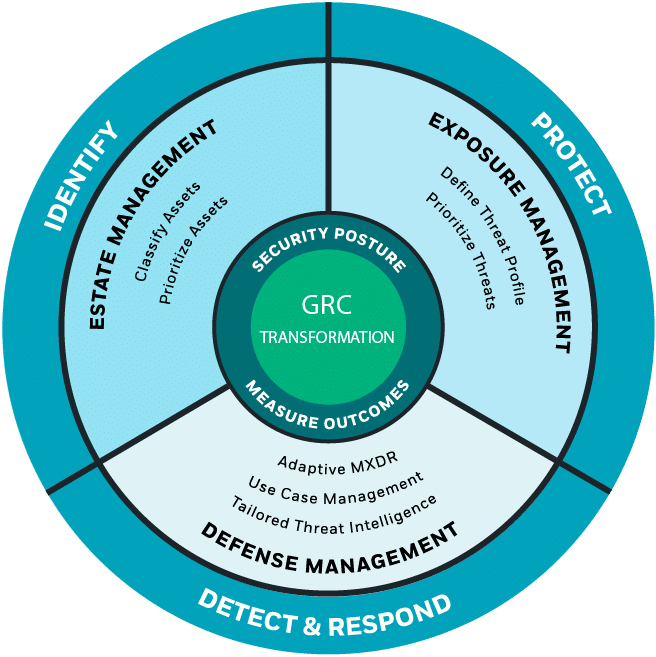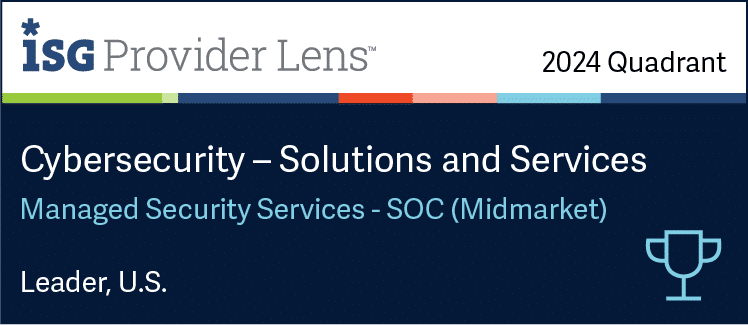Today’s Cybersecurity Dilemma: Analyzing over 100,000 security incidents daily from more than 150 distinct threat actors
The Challenges:
- Security teams struggle to keep up with threats
- Uncertainty about relevant and significant threats
- Blind spots from ineffective, scattered cybersecurity tools

The Solution: Defend Against the Threats That Matter Most
CyberProof provides an integrated threat-led platform that combines:
- Estate (Asset) Management: Tag, classify, and prioritize known and unknown assets to understand your exposure – continuously
- Exposure Management: Focus on relevant threats using CTEM and ASCA frameworks – continuously
- Defense Management: Optimize detection and response playbooks – continuously
- Resulting in GRC Transformation: Mitigate Global Risk, Define Business Outcomes & ROI, Mature Security Posture

SecOps & Risk Mitigation
CyberProof uses OSINT and threat intelligence feeds for visibility into threats.
CyberProof’s adaptable playbooks address continuously evolving threats with updated strategies.
Professionals manage sophisticated networks, leveraging experience to counter advanced threats.
Professionals manage sophisticated networks, leveraging experience to counter advanced threats.
24/7 global SOC support ensures incident response with guaranteed SLA.
24/7 global SOC support ensures incident response with guaranteed SLA.
CyberProof develops recovery plans, restoring capabilities after a cyber incident.
Classify and manage enterprise assets, understanding risks and data sensitivity.
Non-destructive tests uncover potential exploits in assets and applications.
Mitigate security issues early with CyberProof’s training and awareness programs.
Rigorous security assessment for on-premise and cloud applications to ensure protection.
IAM manages user access, monitors for anomalies, ensuring security.
Cloud First approach ensures compliance and security within cloud environments.
Managed service for SIEM, EDR, MXDR, and threat intelligence solutions.
Identify, assess, and mitigate security vulnerabilities through regular scanning.
Partners
“Today I have complete visibility into the entire environment, in real time”
Jamil Farshchi | Equifax CISO
CyberProof CTEM
CyberProof’s CTEM platform, powered by Interpres, is able to continuously identify, assess, and prioritize risk, while enhancing defense services like MDR, Vulnerability Management and Use Case Management to address evolving threats. Take proactive steps to fortify your security today!
Threat Alerts
Microsoft Patches Actively Exploited Zero-Day Vulnerability
Microsoft has released security update to patch CVE-2025-33053, a high-severity zero-day vulnerability affecting Web Distributed Authoring and Versioning (WebDAV). The flaw is a remote code execution vulnerability in Microsoft Windows Web Distributed Authoring and Versioning (WebDAV) that allows attackers to execute arbitrary code by tricking users into clicking specially crafted WebDAV URLs.
CVE-2025-33053, with a CVSS score of 8.8 was exploited by the APT group “Stealth Falcon,” the flaw was used in a March 2025 attack targeting a defense company in Turkey. The attackers leveraged a new technique to manipulate a legitimate Windows tool’s working directory to execute malicious files hosted on their controlled WebDAV server. Users and organizations are strongly advised to ensure their browsers are fully updated and that automatic updates are enabled to minimize exposure to this actively exploited threat.
Qilin Ransomware Exploiting Fortinet Vulnerabilities for Initial Access
Threat intelligence researchers have identified a new campaign by the Qilin ransomware group targeting Fortinet devices to gain initial access and execute ransomware operations. Active since 2022, Qilin operates a Ransomware-as-a-Service (RaaS) model and is responsible for over 310 known attacks. High-profile victims include Court Services Victoria, Yangfeng, Lee Enterprises, and London-based NHS hospitals—highlighting the operation’s reach and impact. This latest campaign, observed between May and June 2025, reportedly targets multiple organizations in Spanish-speaking countries, with potential global expansion expected.
The campaign exploits several FortiGate vulnerabilities, including CVE-2024-21762 and CVE-2024-55591, which enable attackers to bypass authentication and remotely execute malicious code on unpatched devices. These intrusions are partially automated and serve as the initial access vector for broader ransomware deployment.

















































































